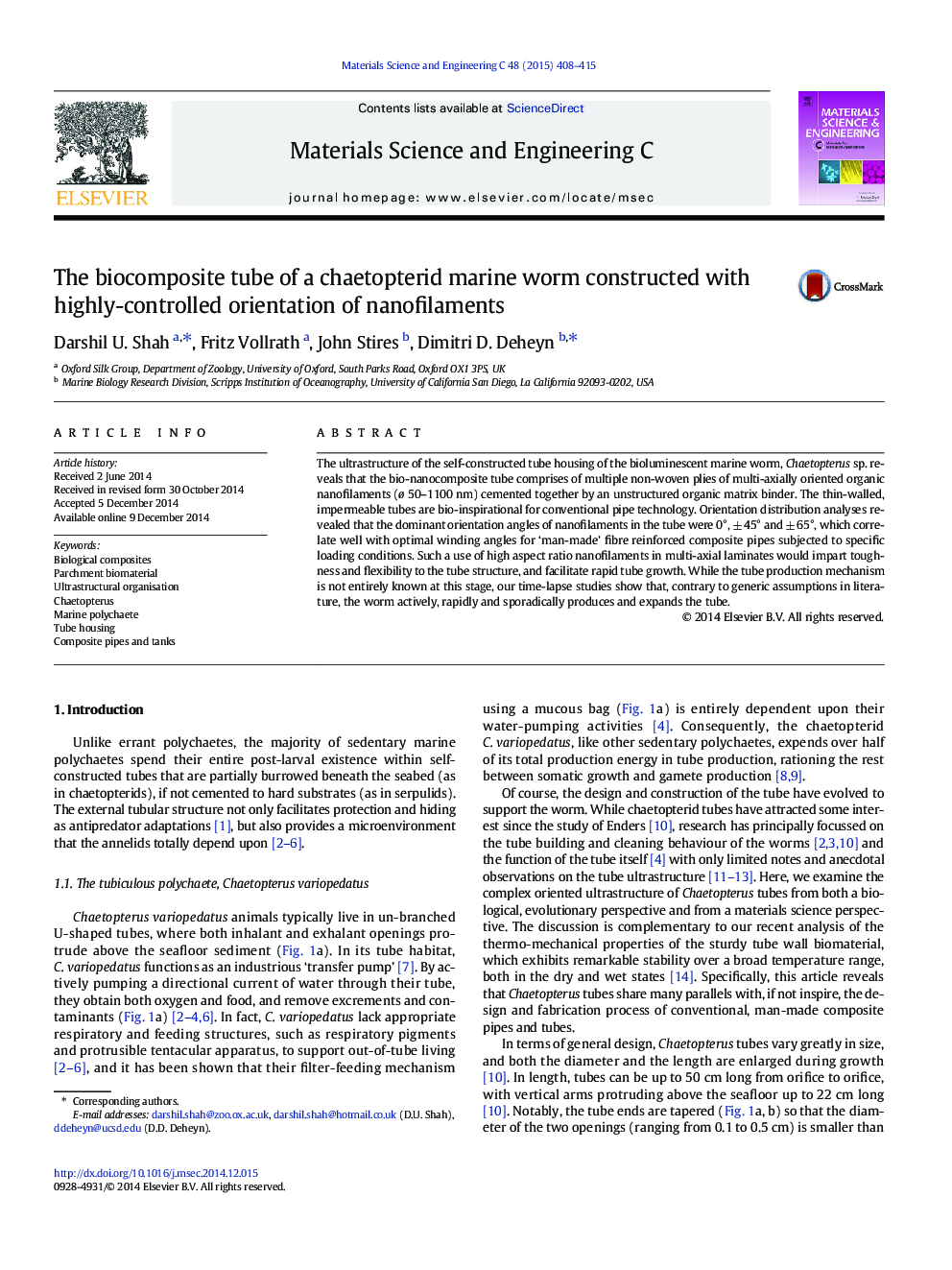| Article ID | Journal | Published Year | Pages | File Type |
|---|---|---|---|---|
| 1428473 | Materials Science and Engineering: C | 2015 | 8 Pages |
•Studied the ultrastructure of Chaetopterus' parchment tube housing•Nature's multi-layered, oriented, organic nanofilament composites•Controlled orientation imparts integrity and facilitates rapid production.•The impermeable tubes are bioinspirational for conventional pipe technology.
The ultrastructure of the self-constructed tube housing of the bioluminescent marine worm, Chaetopterus sp. reveals that the bio-nanocomposite tube comprises of multiple non-woven plies of multi-axially oriented organic nanofilaments (ø 50–1100 nm) cemented together by an unstructured organic matrix binder. The thin-walled, impermeable tubes are bio-inspirational for conventional pipe technology. Orientation distribution analyses revealed that the dominant orientation angles of nanofilaments in the tube were 0°, ± 45° and ± 65°, which correlate well with optimal winding angles for ‘man-made’ fibre reinforced composite pipes subjected to specific loading conditions. Such a use of high aspect ratio nanofilaments in multi-axial laminates would impart toughness and flexibility to the tube structure, and facilitate rapid tube growth. While the tube production mechanism is not entirely known at this stage, our time-lapse studies show that, contrary to generic assumptions in literature, the worm actively, rapidly and sporadically produces and expands the tube.
Graphical abstractFigure optionsDownload full-size imageDownload as PowerPoint slide
